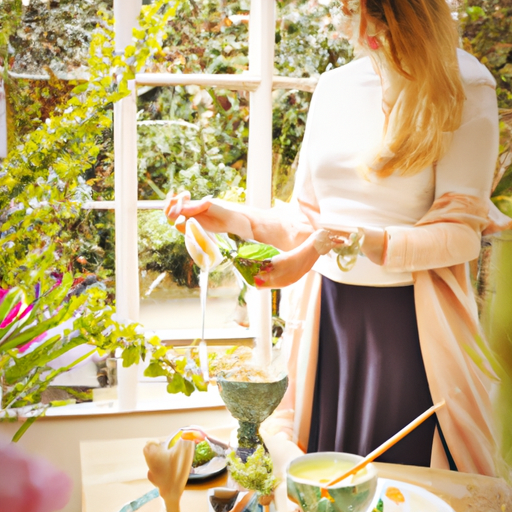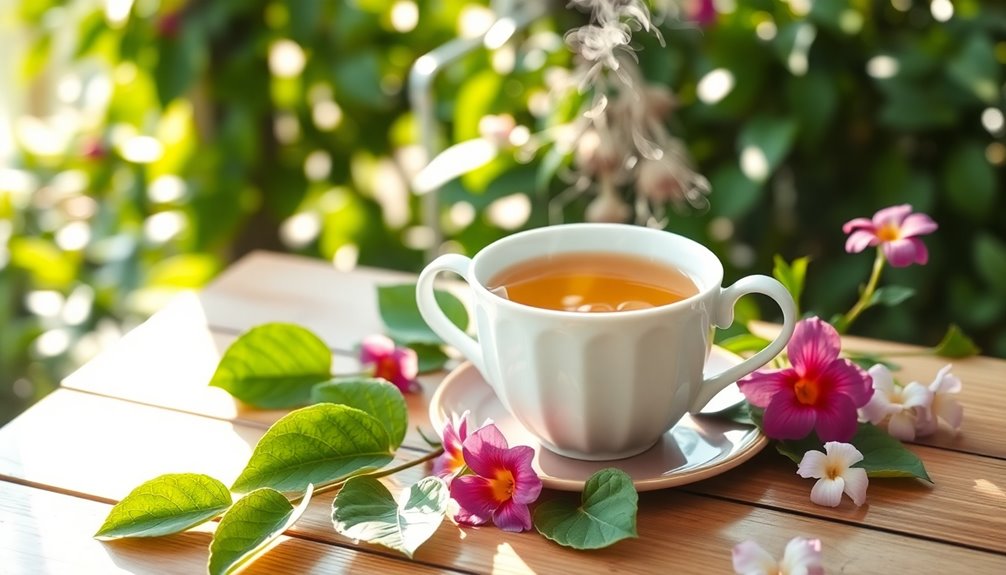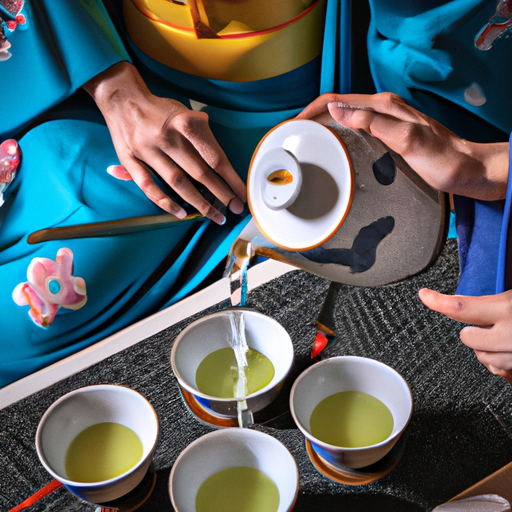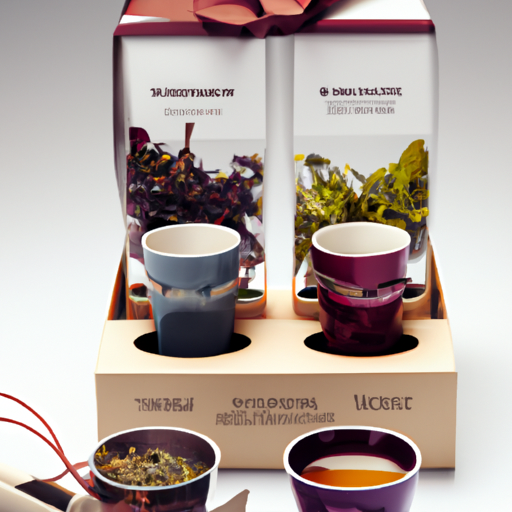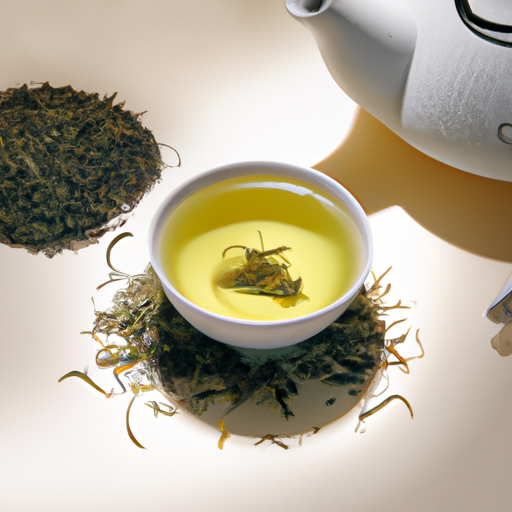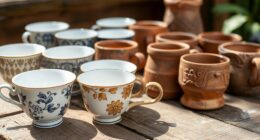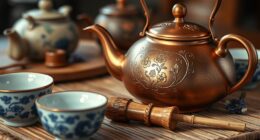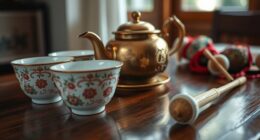So, if you’re in the mood for a cup of matcha but don’t have a whisk, don’t fret! I’ve got you covered! Making matcha without a whisk might seem challenging, but fear not, I’m here to help you through the process.
In this article, I’ll share alternative methods and techniques that will help you achieve that perfect cup of matcha, whisk or no whisk. Whether you have a mason jar, a blender, or a frother, there’s a solution for you.
I’ll also provide some handy tips to ensure a delicious matcha experience every time. So, let’s dive into the world of matcha and discover the secrets to making a smooth and frothy cup without a whisk.
Get ready to enjoy the rich, vibrant flavors of matcha in a whole new way!
Key Takeaways
- Whisking matcha is important to prevent it from becoming chalky and clumpy.
- Alternative methods such as shaking in a mason jar or blending with hot/cold water can be used.
- Matcha can be used to make smoothies or lattes by blending with other ingredients or substituting milk for water.
- Sifting matcha before using it helps get rid of clumps.
Methods for Matcha Preparation
I will explore different methods for preparing matcha without a whisk, such as shaking it in a mason jar or blending it with hot or cold water in a blender.
When making matcha without a whisk, it’s important to start by sifting the matcha powder to remove any clumps. This will ensure a smooth and creamy texture.
Once the matcha is sifted, you can choose to shake it in a mason jar or bottle with water, or blend it in a blender with hot or cold water. These alternative methods are great for beginners or for those on the go.
Additionally, you can also use matcha to make delicious smoothies by blending it with other ingredients like fruits or yogurt. There are many matcha smoothie recipes available that you can try and customize to your liking.
Alternative Tools and Techniques
Blending matcha with hot or cold water in a blender or using a milk frother are alternative methods for preparing matcha. While a traditional whisk may provide the smoothest texture, these tools offer convenience and efficiency. When using a blender, simply add matcha powder and water, then blend until well combined. This method creates a frothy and creamy matcha, perfect for enjoying hot or cold. On the other hand, a milk frother can also be used to achieve a similar result. By frothing the matcha with hot water, you can create a velvety and indulgent beverage.
When making matcha, it is important to choose high-quality matcha powder for the best taste and health benefits. High-quality matcha is vibrant in color and has a smooth and rich flavor. It is packed with antioxidants and provides a natural energy boost. Investing in a good quality matcha powder can greatly enhance your matcha experience and make it even more enjoyable. So whether you choose to use a blender or a milk frother, don’t forget to select a high-quality matcha powder to truly savor the unique flavors of this incredible beverage.
| Milk Frother | Blender |
|---|---|
| Convenient | Efficient |
| Creates frothy and creamy matcha | Blends matcha quickly and easily |
| Can be used for hot or cold matcha | Provides a smooth texture |
| Offers versatility in beverage options | Great for making matcha smoothies |
Tips for a Delicious Matcha Experience
To enhance your matcha experience, it’s important to choose high-quality powder that’s vibrant in color and has a smooth and rich flavor. This will ensure that you get the best taste and overall enjoyment from your matcha.
In addition to using high-quality powder, there are a few other tips to make your matcha experience even better. One way to enjoy matcha is by incorporating it into smoothie recipes. Matcha adds a unique flavor and a boost of antioxidants to your smoothies. You can try blending matcha with fruits, yogurt, and almond milk for a delicious and nutritious matcha smoothie.
Another benefit of matcha is its health and wellness properties. Matcha is packed with antioxidants, which can help boost your immune system and promote overall well-being. It also contains caffeine and L-theanine, which can provide a calm and focused energy boost.
By following these tips and exploring different ways to enjoy matcha, you can have a delicious and satisfying matcha experience while reaping the benefits of this powerful green tea.
Frequently Asked Questions
What is the best way to store matcha powder?
The best way to store matcha powder and keep it fresh is to store it in an airtight container in a cool, dark place, away from sunlight, heat, and moisture. This helps preserve its flavor and quality.
Can matcha be made with cold water?
Matcha can definitely be made with cold water, but it may taste slightly different compared to when it’s made with hot water. The cold water method can create a refreshing and smooth matcha, perfect for those hot summer days.
How much matcha powder should be used per serving?
For a single serving of matcha, I recommend using 1 teaspoon of matcha powder. However, the amount can be adjusted to personal preference. Matcha can also be enjoyed in various ways such as in smoothies or as a latte.
Can matcha be made with alternative milk options?
Yes, matcha can be made with alternative milk options like almond milk, coconut milk, or soy milk. These milk alternatives add creaminess and enhance the health benefits of matcha, such as antioxidants and vitamins.
Can matcha be sweetened with sugar or other sweeteners?
Yes, matcha can be sweetened with sugar or other sweeteners. Some common sugar alternatives for sweetening matcha include honey, agave nectar, or stevia. It’s important to add sweeteners to taste and adjust accordingly.

